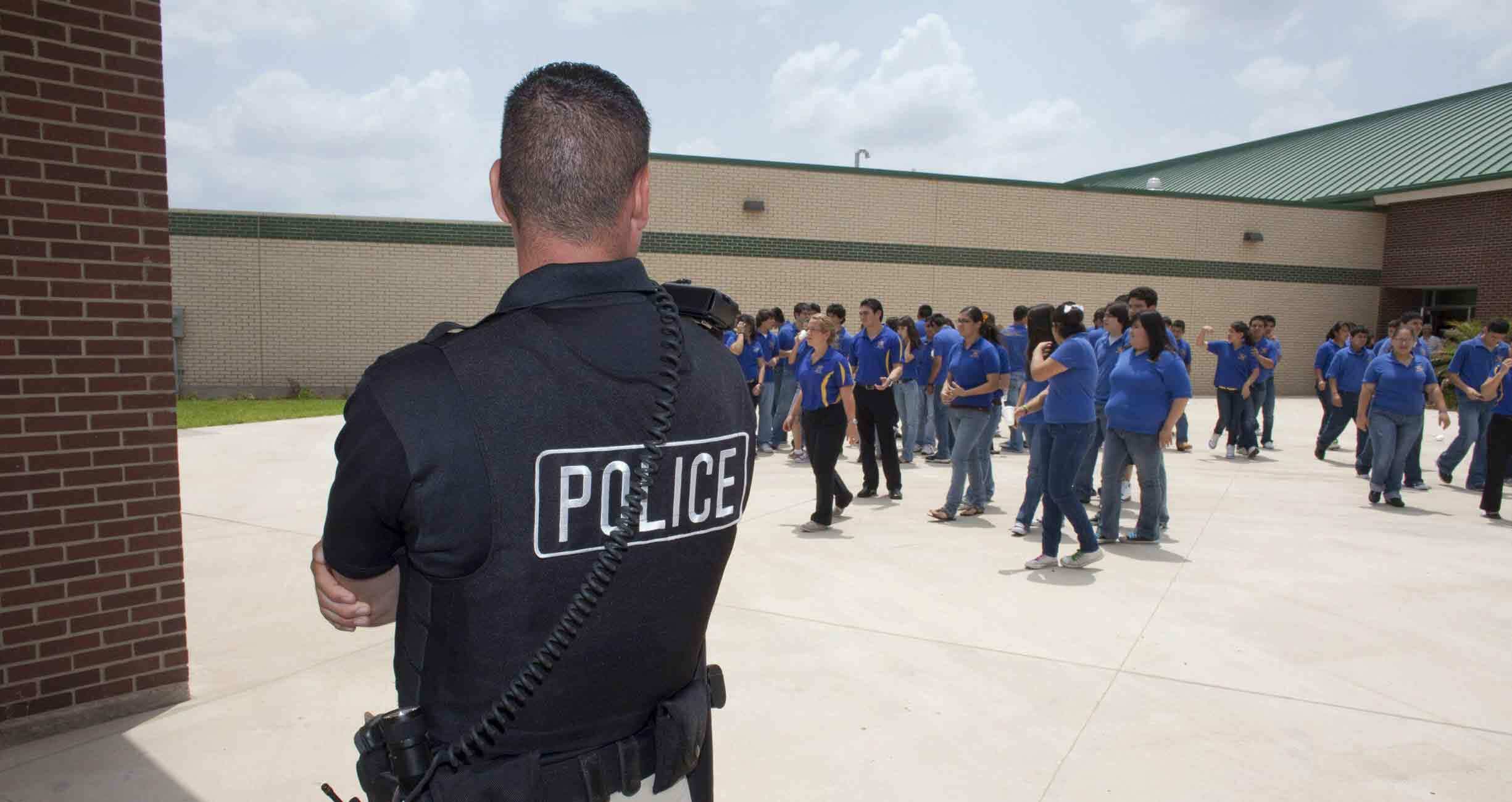We Spend Millions Policing Students. It Doesn't Make Our Schools Safer.

Shadiatu Moustapha’s 6-year-old son, who was recently diagnosed with a sensory processing disorder, has been suspended twice this school year.
“In a situation where he’s aroused very easily, he may appear to be more impulsive,” Moustapha told news station ABC7. “Rather than giving him the support, he has been punished.”
Their experiences, sadly, are not anomalous, as this country’s predilection for punishment—evident in the fabric of our criminal legal system—also extends to our public school system. On average, 250 preschoolers are suspended or expelled each day of the school year—a rate more than three times that of older students. Every year, nearly 3 million K–12 students get suspended and more than 100,000 are expelled.
Those removals only make it more likely that students will struggle academically and drop out of school. This practice also feeds the school-to-prison pipeline, especially for older students. A recent University of California, Irvine study found that high school students who are suspended or expelled are more than twice as likely to be charged, convicted, and incarcerated as young adults.
“Schools should be about enabling students to thrive,” sociology professor Andrew Penner, a co-author of the study, told the Los Angeles Times. “There’s nothing about the logic of punishment and incapacitation that helps prepare students to thrive.”
Black students are more than three times as likely to be suspended or expelled as white students. Indigenous students, Latino students, girls of color, LGBTQ+ youth, and students with disabilities and histories of poverty, abuse, and neglect are also disciplined and arrested at disproportionate rates. Suspension, and worse, expulsion, only serve to punish students. Other strategies, such as mental health and counseling services and youth development programs, are far more effective.
But those support services are hard to find in schools. Instead, schools overinvest in policing. The U.S. Department of Justice’s Office of Community Oriented Policing Services (COPS) awarded nearly $50 million to 160 school districts and municipalities for school police in 2020 alone—and the federal government has spent more than $1 billion since 1999. At least 14 million students—nearly a third of K–12 students in the United States—attend schools that have police officers on site but do not staff counselors, nurses, or social workers.
The unnecessary presence of police in schools fuels the school-to-prison pipeline. In schools, officers often end up responding to behavioral issues and low-level infractions—not serious violent incidents. Policing in schools increases the likelihood that students will be surveilled and criminalized for minor and vague conduct like “disruptive behavior.” And because schools with a higher percentage of Black students are more heavily policed, Black students are disproportionately likely to be suspended, expelled, or arrested. This, in turn, leads to lower graduation rates and higher chances of future incarceration.
“We pay a lot of money to have police officers in schools,” Penner told the Los Angeles Times. “What if we spent that money having therapists and social workers in schools instead? How different would our education system look? How different would these kids’ lives look?”
We know the answer to that. Schools that employ more counselors, social workers, nurses, and psychologists see improved attendance rates; lower rates of suspension, expulsion, and other disciplinary actions; improved academic achievement and career preparation; and improved graduation rates. This support improves students’ health outcomes and increases school safety.
Yet some recent moves only increase the likelihood that students will be needlessly criminalized. Virginia, for example, passed legislation last month that requires principals to report many low-level offenses like alcohol or drug use to law enforcement.
Students and advocates alike are pushing elected officials to ensure that schools are safe, supportive, and welcoming environments. In New York, the Solutions Not Suspensions bill aims to shorten the maximum length of suspension from 180 school days—an entire school year—to 20 school days. It also limits the use of suspensions for students in kindergarten through third grade and requires schools to use alternatives to suspension that keep kids in the classroom.
With $122 billion in American Rescue Plan Act funding for public education, schools and communities have the opportunity to invest resources in supports such as mental health and counseling services that improve behavioral, health, and educational outcomes for students. Instead of employing police to patrol hallways, let’s hire guidance counselors, nurses, psychologists, and social workers. Let’s offer students support—not punishment.
